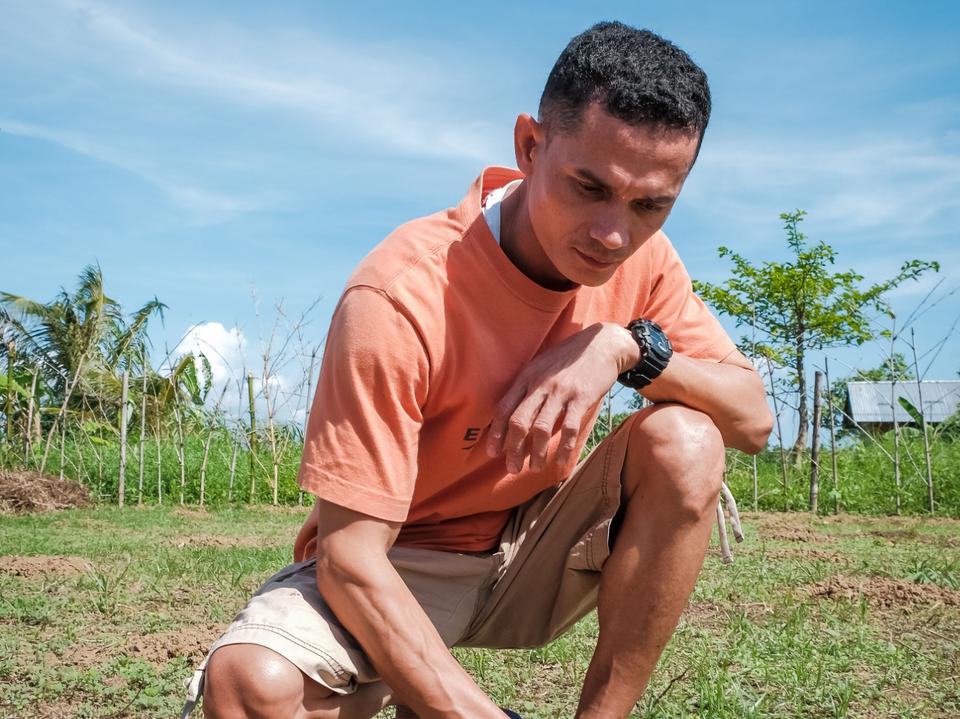The general president of the Relief Society of The Church of Jesus Christ of Latter-day Saints says malnutrition can strike families anywhere in the world.
Sister Jean B. Bingham, leader of one of the world’s largest women’s organizations, is in the Philippines to see how a Church-sponsored pilot nutrition program is working in a Latter-day Saint congregation in the community of Catarman, located in the province of Northern Samar.
- Sister Bingham Philippines
- Sister Bingham Philippines
- Sister-Bingham-Philippines
- Sister Bingham Philippines
- Sister Bingham Philippines
- Sister-Bingham-Philippines
- Sister Bingham Philippines
- Sister Bingham Philippines
- Sister Bingham Philippines
- Sister Bingham Philippines
| Temple Square is always beautiful in the springtime. Gardeners work to prepare the ground for General Conference. © 2012 Intellectual Reserve, Inc. All rights reserved. | 1 / 2 |
“Visiting the families that were part of the nutrition program was amazing,” said Sister Bingham during ministering visits to members’ homes on Monday, February 3, 2020. “When they were first told that their children weren’t getting the appropriate nourishment, it must have been a shock. And yet they thought, ‘I’m going to do everything I can to help my child.’ They made every effort to keep track of what they’re eating and to provide the appropriate nutrition.”
Malnutrition remains a threat in Catarman, even though the agricultural town grows and supplies coconut, rice, abaca, corn, rice and vegetables to other parts of the country.
Pilot Nutrition Program
The Church’s pilot nutrition program in the Philippines is an area-led effort to help address stunted growth and other ill effects of poor nutrition of children from newborn to 60 months in age. A nutrition committee was formed in the stake (similar to a diocese) to administer the program. Local Church leaders also sought assistance from local government units and rural health experts to provide nutrition training.
“One of the things I noticed is that the program that was done here was not something that was sent from [Church] headquarters,” revealed Sister Bingham. “But actually, the leaders sat down and counseled together. . . . They created a marvelous program that was really beneficial to the members here. That sense of partnership, loving your brothers and sisters, was just marvelous.”
Latter-day Saint Charities, the humanitarian arm of the Church, provided the scales and other equipment to properly measure the weight and height of children for the mandatory pre-enrollment screening.
The first screening of children in the congregation took place in March 2019. There are currently more than 100 children ages 5 and younger enrolled in the nutrition program.
Armed with scales, food charts and a recipe or two, ministering brothers and sisters in the Catarman Philippines Stake frequently visit homes to share not only the gospel of Jesus Christ, but also to measure the progress of children participating in the stake's pilot nutrition program.
“There were parents who were educated, parents who had sufficient income, and yet their children had the same kind of challenge,” said Sister Bingham. She then relayed the shock of a young bishop who learned that his child is undernourished. “So really, [malnutrition] can strike anywhere.”
Long-Term Sustainability
The Church nutrition program not only helps curb malnutrition during a child’s formative years, but it also empowers families to become self-reliant by providing trainings on vegetable gardening, cattle raising and other relevant skills.

Franco Batiles, a young father of three children under the age of five, shared that being in the nutrition program helped him understand the importance of taking care of his family, especially in providing the nutritional needs of his children. With ample space in his backyard, he has become more diligent in growing fruits and vegetables for his family.
“This isn’t just the only area where [malnutrition] is a challenge,” explained Sister Bingham. “Once we can figure out how to address this problem here, that can be replicated in any area of the world that has that challenge. I’m just really excited for the future of the children of the church when this goes forward.”